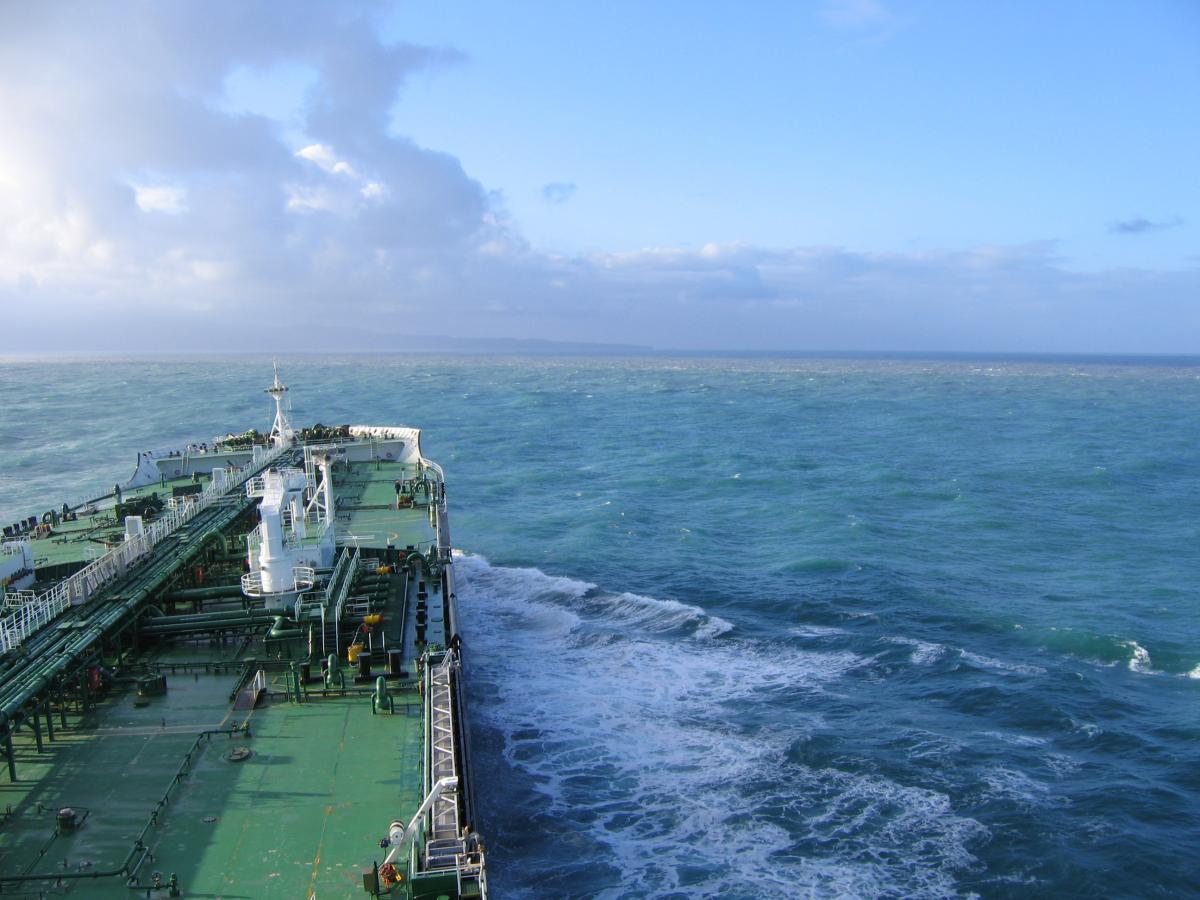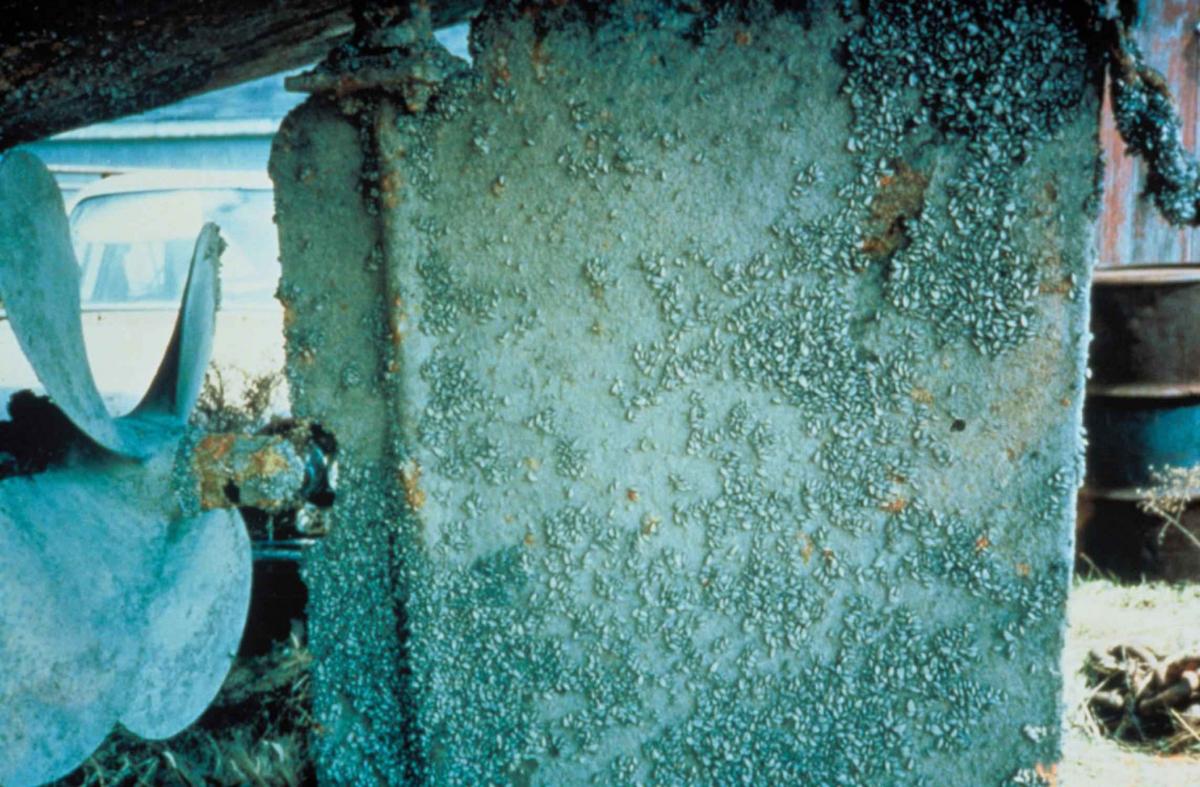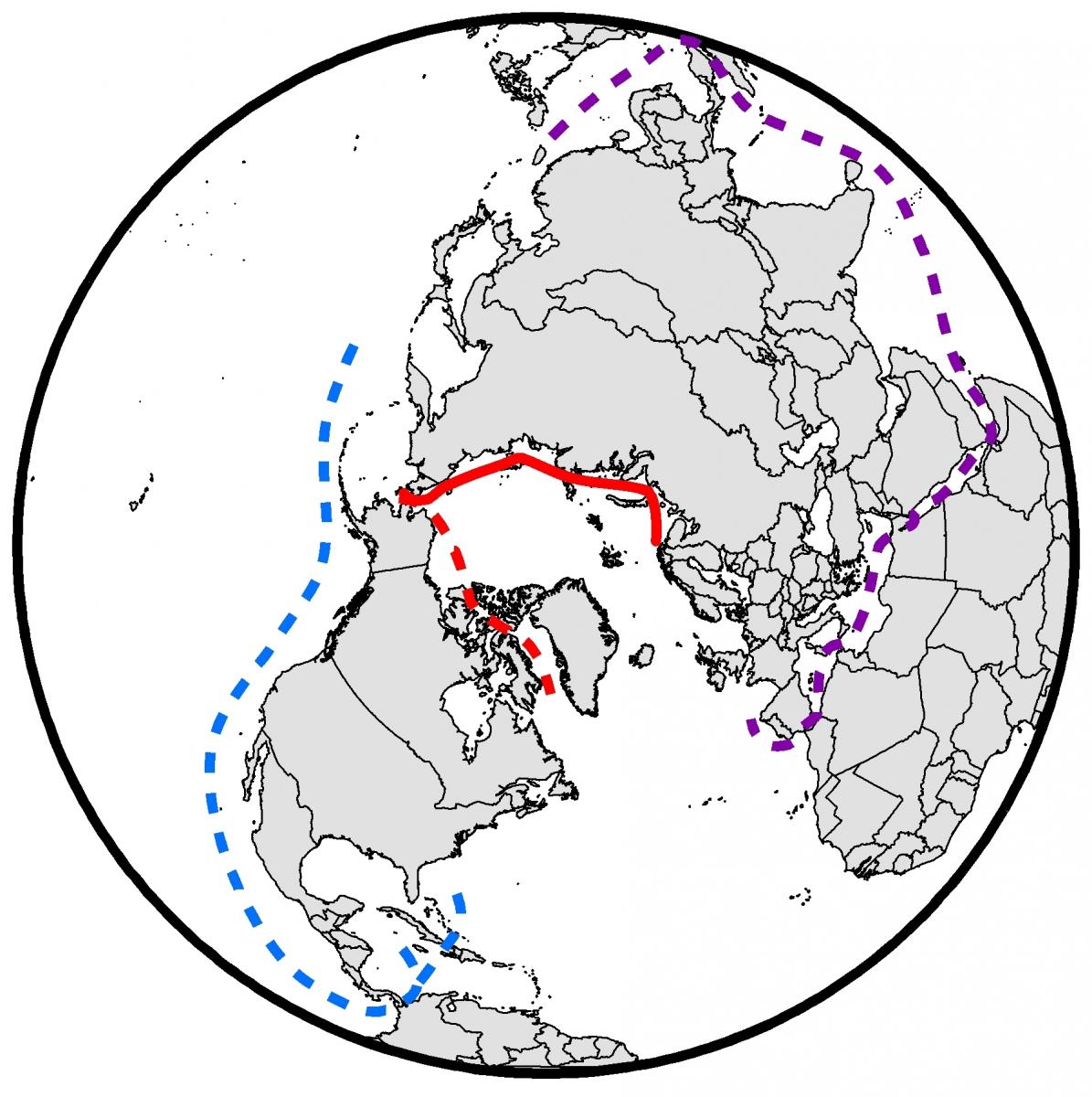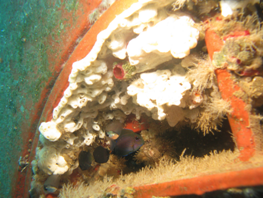
The opening of Arctic shipping routes could lead to global increases in species introductions if we don’t take steps now to minimize the spread of nonnative species. Drs. Whitman Miller and Gregory Ruiz make the case for proactive management in their latest article in Nature Climate Change published May 28, 2014.
For at least 2 million years, sea-ice has protected the Arctic from significant human impacts, but the ice is melting, and many are anxiously awaiting the opening of this largely uncharted territory. Shipping companies are anxious to cut their travel time between Asia and Europe. Anticipation of new opportunities is motivating some industries to start planning for the extraction of natural resources including oil, natural gas, rare-earth metals, and fish stocks. And tourism is expected to take off as well. All of these activities rely on shipping. But with increased ship traffic, come increased risks.
Ship-related species' introductions, specifically those resulting from ballast water and hull fouling, have had major impacts on marine and aquatic environments around the world. Ships have always transported invasive species - from the early wooden sailing ships to modern steel-hulled ships, organisms have always found a way to hitch a ride. Surprisingly, it has taken a long time for us to realize the impact of invasive marine species and recognize shipping as the major means of introduction. For example, this year the Panama Canal is celebrating 100 years in operation, but only recently have scientists come to understand the role of the canal in increasing species’ introductions. Furthermore, water ballast replaced dry ballast in the first steel-hulled ships ca1888, but the link between ballast water and the introduction of marine species wasn’t made until Dr. James Carlton’s research in the late 1970s, about 90 years later. Around the same time as Dr. Carlton’s research, Zebra Mussels (Dreissena polymorpha) invaded the Great Lakes, most probably introduced in ballast water. These invaders quickly became the “poster children” of invasive species as they wreaked havoc on the ecology and economy of the Great Lakes ecosystem, causing billions of dollars in damages. So while many invaders quietly slipped under the radar, a few made a big splash resulting in public outcry and regulations.

Thanks to research by Drs. Miller and Ruiz, we don’t need to wait another 100 years to document the global impact of invasive species brought about by the opening of the Northwest and Northeast Passages. Nor do we need to wait for the introduction of the next invader that will devastate an ecosystem and hurt the economy on the scale of the Zebra Mussel invasion. Past lessons suggest that management actions taken now, prior to increases in Arctic shipping traffic, could help minimize the colonization of invasive species in the Arctic and species exchanges between the Atlantic and Pacific oceans.
The Northeast Passage, also called the Northern Sea Route, is a 3,000-mile passage along the coast of Russia connecting the Barents and Bering Seas. The Northwest Passage runs along the north coast of Canada. The Northwest Passage has only been transited once by a commercial ship, but the Northeast Passage is now open to shipping during several months of the year. Based on data from 2009-2013, Drs. Miller and Ruiz predict that ship traffic through the Northeast Passage will increase 20% per year, or more, in the coming decades, depending in large part on the global economy. Ships traveling between Europe and Asia that are able to take the Arctic routes could reduce their travel time by as much as half compared to the current route through the Panama or Suez Canals.
But this shortcut isn’t the only economic benefit expected to result from melting sea ice. With the increased exploration and natural resource extraction that is predicted, we expect a huge jump in ship traffic to the Arctic and the creation of new shipping ports. It’s the increase in shipping to and from the Arctic and the creation of new ports that may hold the greatest risk of species’ introduction and harm to the Arctic environment.

Drs. Miller and Ruiz predict that the opening of the Arctic to shipping will pose a greater risk of species’ introductions than the opening of the Panama Canal did 100 years ago. There are two important factors that determine if an organism survives a voyage in or on a ship. The first is voyage length – the shorter the voyage, the more likely an organism is to survive the trip. Both of the northern passages reduce ship transit time. Second, the environmental conditions encountered along the route could result in either an increase or decrease in survival rates. An organism on the hull of a ship traveling from Europe to Asia through the Panama Canal would have to survive a dip in the freshwater lake in the interior of the canal; such extreme changes in salinity would cause considerable stress for most marine species. If that same organism were to travel through an Arctic passage it would have to survive extremely cold temperatures, but very little change in salinity. For some species salinity changes might cause more stress than temperature, for others changes in temperature would be more stressful. The low temperatures of the Arctic may favor temperate and cold water species, since they will avoid experiencing warm tropical waters of the Suez or Panama canals.
Driven by strong economic incentives, development and increased shipping is coming to the Arctic. If nothing is done to limit the spread of nonnative species, a substantial increase in invasions to the Arctic and the Polar Regions across the North Pacific and North Atlantic oceans is predicted. Global increases in invasions are also predicted as species not currently able to survive transit through the Panama and Suez Canals may be successfully transported through the Arctic.

The Arctic is one of the few places left on Earth with limited exposure to marine invasive species; however, there is little baseline data on Arctic marine invaders. Drs. Miller and Ruiz are sounding the alarm to encourage scientists and policy makers concerned with conservation and sustainable use of the marine environment to put in place safeguards to protect this area from invasive species. Invasive species could have devastating impacts on the Arctic environment and its unique plants and animals. No need to wait for impacts to be assessed and documented; prevention is by far the most cost-effective method of addressing biological invasions. Let’s work together to prevent this problem.
Reference:
Miller AW and GM Ruiz 2014. Arctic shipping and marine invaders. Nature Climate Change, 4:413-416.



